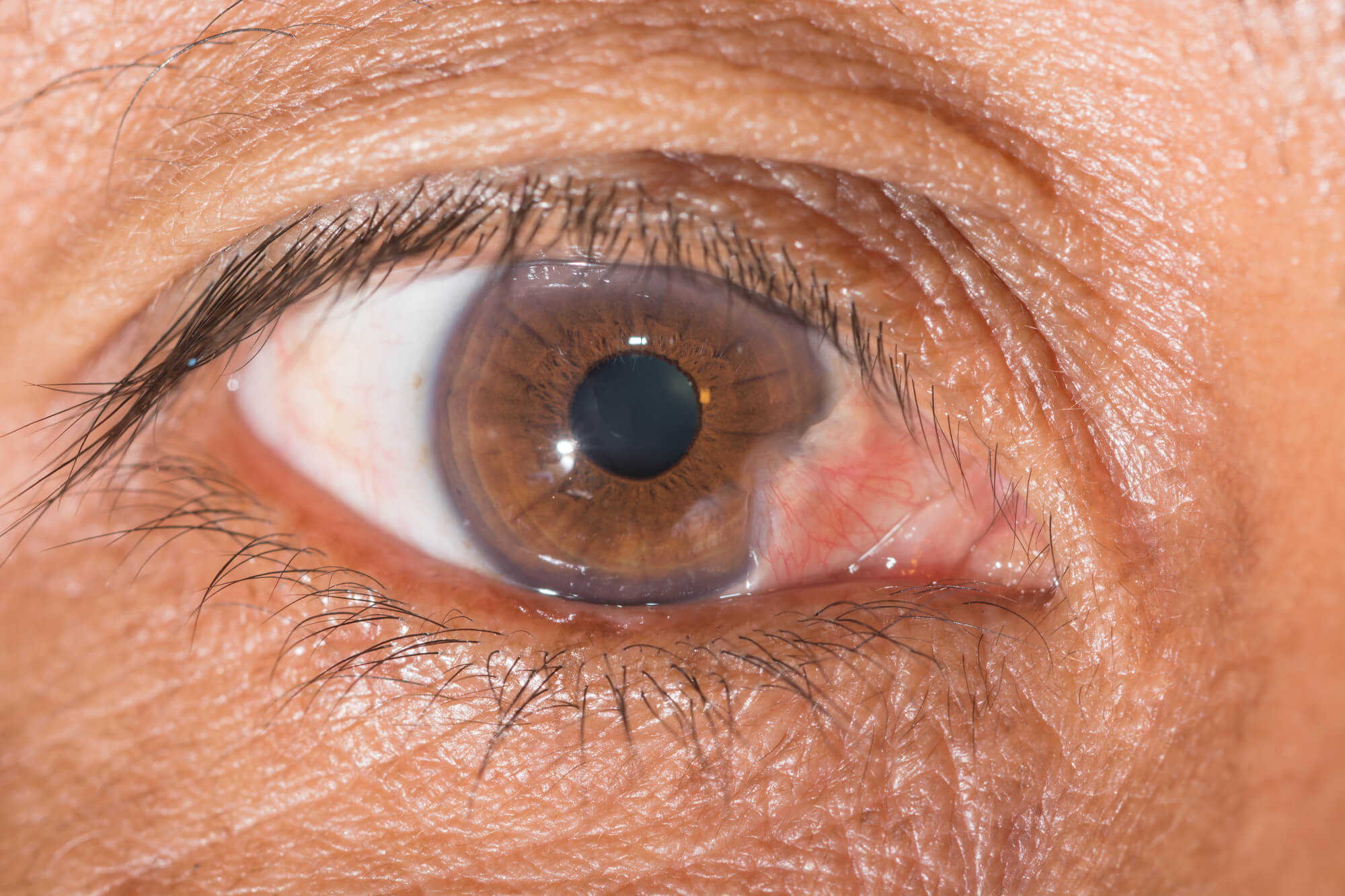Our Patient-Centric Approach to Treatment
Georgia Ophthalmologists believes that your comfort is an essential part of having a positive experience while under our care. We are committed to preserving your #VisionForLife.
Who can develop a pterygium?
Anyone with excess exposure to sunlight, dust and wind, such as those who work outdoors, is at risk.
-
FARMERS
Farmers spend long hours outside in dusty and sunny conditions.
-
FISHERMAN
Whether for sport or business, fishermen spend hours on the water in bright sun.
-
CONSTRUCTION WORKER
A construction worker’s constant outside exposure to wind and dust can cause pterygia.
-
CHILDREN
Despite sometimes spending long hours outdoors, pterygia are rare in children.

What treatment is available?
Our advanced, no stitch/no needle process ensures a quick recovery and most patients are back to work within three to four days.

Is a procedure always necessary?
Early stage irritation can be treated with eye drops but if the pterygium threatens to block vision, surgery is necessary.

The Georgia Ophthalmologists Approach
Dependending on the stage of growth, pterygia can be treated either with medication or surgery. During your consultation, your ophthalmologist will discuss which one is best for you.

Patients Say
Pterygia are harmless growths on the cornea.
Surgical treatment is a no-needle / no-stitch procedure with minimal recovery.
The main symptom of a pterygium is an area of inflamed tissue, with blood vessels on the inner and/or outer edge of the cornea. Sometimes these can cause a burning sensation, irritation, or a feeling like there’s something foreign in the eye.
When the pterygium begins to block vision or causes symptoms that are hard to control, your ophthalmologist may recommend surgical removal.
1CONSULTATION
During your consultation, your ophthalmologist will examine the eyes to confirm the diagnosis. No special tests are needed. Your ophthalmologist will assess the severity of your pterygium, and which treatments will be most effective – either medication or surgery.
2SCHEDULE AN APPOINTMENT
If surgery is recommended, an appointment will be scheduled at our ambulatory surgery center at a time that works for you. Plan to have someone drive you to and from the appointment. You’ll spend about 3 hours with us. The procedure takes about 30 minutes.
3THE PROCEDURE
After using a combination of numbing drops and numbing gel, the pterygium is gently separated from the cornea using our advanced, no stitch/no needle process. This is followed by application of mitomycin-c, a medication designed to prevent a recurrence. The final step involves placement of a transparent amniotic membrane which is left on the surface of the eye to dissolve over a 4 to 6 week period and ensure proper healing. By using these advanced techniques, the likelihood of recurrence is reduced from 50% down to 3% to 5%.
Dr. Jose Bigles
Dr. Jose Bigles is a fellowship-trained ophthalmic surgeon with extensive experience in treating pterygia as well as a wide variety of ophthalmic disorders. Contact our office to schedule an examination for diagnosis and treatment.
LEARN MOREFAQ
-
What is a pterygium?
A pterygium is a non-cancerous growth of the clear, thin tissue (conjunctiva) that lays over the white part of the eye (sclera). One or both eyes may be involved.
-
How do I know if I have a pterygium?
The main symptom of a pterygium is an area of inflamed tissue, with blood vessels on the inner and/or outer edge of the cornea. Sometimes these can cause a burning sensation, irritation, or a feeling like there’s something foreign in the eye.
When the pterygium begins to block vision or causes symptoms that are hard to control, your ophthalmologist may recommend surgical removal.
-
What causes a pterygium?
All the factors which cause a pterygium are unknown, but the ailment is more common in people with excess exposure to sunlight, dust and wind, such as those who work outdoors. Farmers, fishermen, and people living near the equator are often affected. Pterygia are rare in children.
-
How do you treat a pterygium?
When the pterygium begins to block vision or causes symptoms that are hard to control, your ophthalmologist may recommend to remove it with surgery.
Pterygiums are removed via a short, out-patient procedure averaging about 30 minutes. Our advanced, no stitch/no needle process ensures a fast recovery and most patients are back to work within three to four days. For every pterygium removal, we use Mitomycin-C along with an amniotic membrane graft to reduce the chance of recurrence. By using these advanced techniques, the likelihood of recurrence is reduced from 50% to 3-5%.
-
Can a pterygium come back after removal?
A pterygium can return after it is removed. However, our advanced surgical methods make this unlikely (less than 5% chance). People with pterygium should be seen by an ophthalmologist each year, so that the condition can be treated before it affects vision. Call for an appointment with your ophthalmologist if you have had a pterygium in the past and your symptoms return.
-
How can I prevent getting a pterygium?
People who work outside and are constantly exposed to excessive wind, bright sunlight or dust, like construction workers or fisherman, are more susceptible to developing pterygia. People who live or work close to the equator where sunlight is stronger are also susceptible to pterygia. If you work in environments like that, you should always wear protective glasses with UV/UVA protection and a hat with a brim.
Vision For Your Lifestyle
SURVEY FOR CATARACT PATIENTS
You have an important decision to make about your vision future. This survey is designed to help us understand your vision goals so we can provide you with the best possible lens for your lifestyle.
-
General Contact info@georgiavisioncare.com
Contact an Office
-
Phone (770) 786-1234
Fax(770) 385-0813

